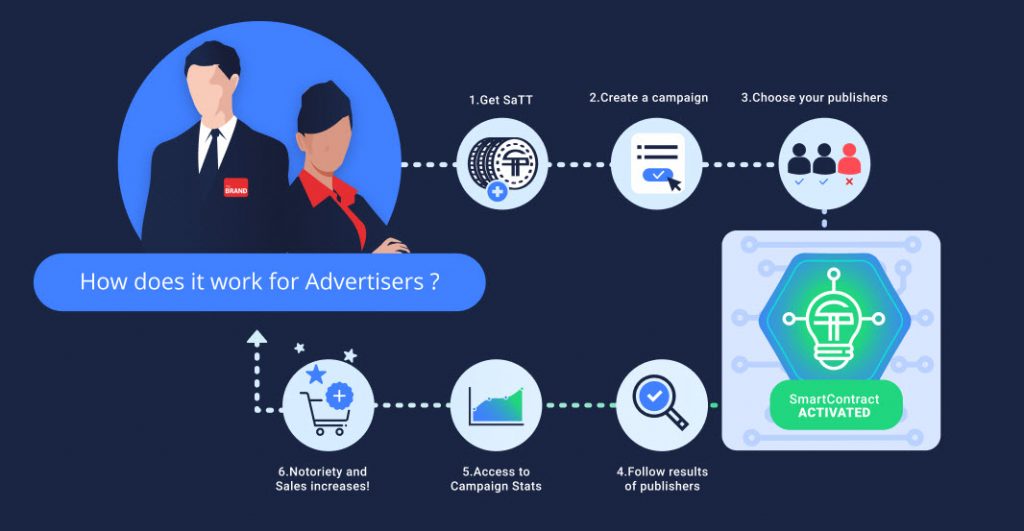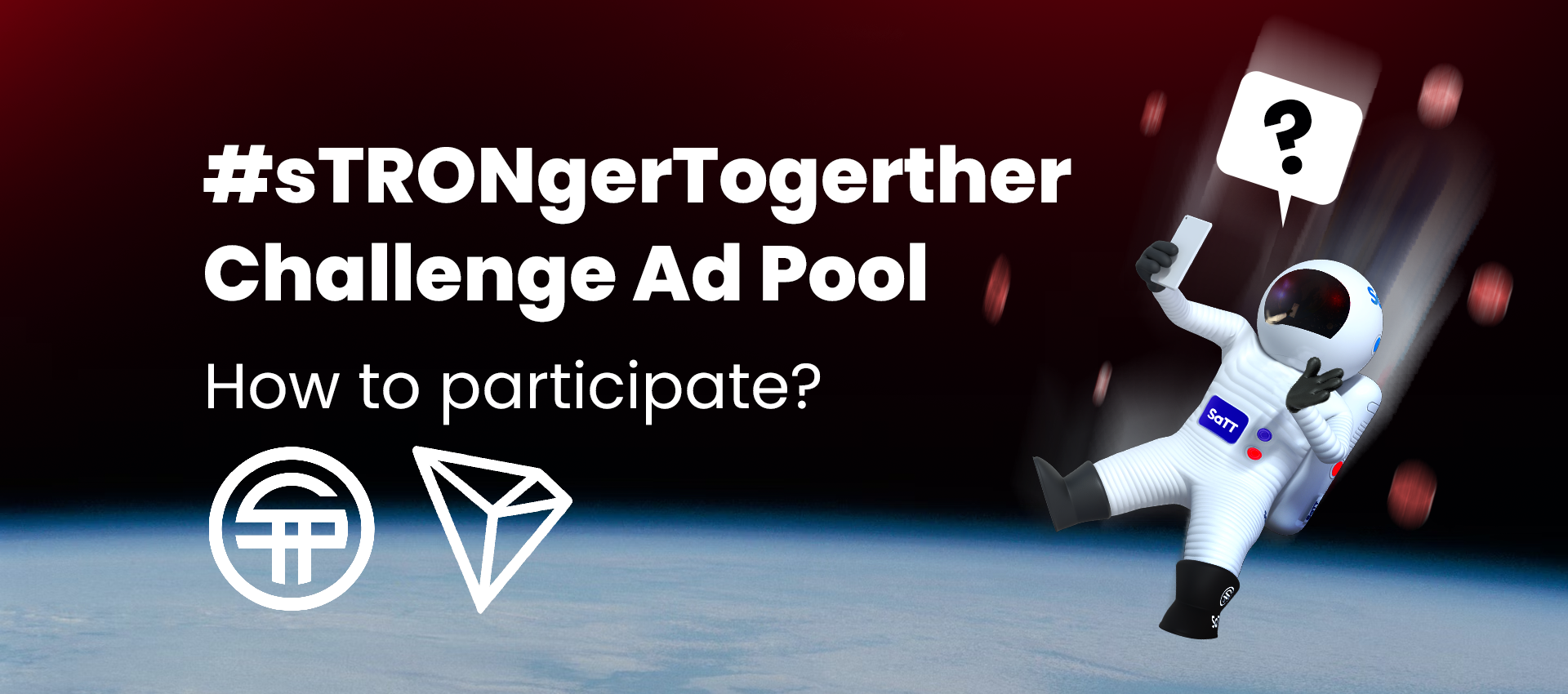
How SaTT intends to revolutionize the online advertising market
Advertising has evolved over hundreds of years to become a key driving force behind the modern economy. The third decade of the 21st century will see the industry enter a new age of technological possibilities.
Social media advertising budgets have doubled worldwide, from $16 billion in 2014 to $31billion in 2016. 77% of Twitter users appreciate a brand more when their tweet is responded to. It takes about 10 hours on average for businesses to respond to a tweet, even though customers want a response within four hours.
84% of people expect brands to create content. About 45% of B2C marketers believe visual content is their most important type of content, while 88% of B2B marketers agree that creating content makes their audience view the organization as a credible and trusted resource.
Advertising used to be simple; there was a time when putting up a sign outside the shop or distributing flyers all around the town were enough. This was perfectly fine during the 17th century. Fast forward to the present, the world is now drifting in the sea of commercial clutter.
Google and Facebook still hold the largest share of total U.S. digital ad spending, with 37.2% and 19.6% respectively. Even though both companies’ market share is declining thanks to competition from companies like Amazon, Google and Facebook remain the two most dominant forces on the market.
Study shows that 84% of people expect brands to create content. This implies that brand engagement is extremely important for consumers. People want content that engages them through storytelling, provides useful solutions and creates entertaining experiences.

Table of Contents
Problems and Challenges
Nearly all industries across the globe are fraught with challenges and problems in this evolving and rapidly changing world. The digital advertising and marketing space is wrestling with their own set of problems and these issues are ripping billions of dollars from the pockets and bottom line of media buyers and sellers alike.
Challenges and problems faced by the advertising industry ranges and some of them are discussed below:
Selecting the relevant publishers:
Recruiting and validating advertising campaign partners is one of the biggest challenges of internet advertising as advertisers must select the best
partners. This can depend on the scope of their broadcast network, the topics addressed or simply its image.
Trust and prevention of fraud:
The digital advertising industry has been riddled with a lack of trust on both sides as well as widespread fraud and lack of transparency. Also, the security of current affiliate networks is threatened: If a centralized network is hacked, the hackers can access all system accounts. In the case of a technical failure on a centralized platform, all ad campaigns stop working until the incident is resolved.
Advertisers and publishers of many ad networks must trust centralized advertising agencies without being able to verify the statistical results provided.
Result quantification of an advertising campaign:
Currently, advertising agencies or affiliate networks are able to evaluate the performance of an advertising campaign using the number of impressions, clicks, or sales. There is, therefore, a specific statistical tool for each platform that is somewhat robust and secure but does not include reactions on social networks that are useful in judging the performance of an ad.
Cost and speed of transaction:
A conventional advertising agency traditionally relies on a prohibitive cost of entry and monthly billing for the services provided. The minimum fee for using their interface ranges from several hundred to thousands of dollars a month.
Centralization: Traditional advertising agencies offer centralized proprietary interfaces that, through their design, may not meet all the expectations of advertisers and publishers. Some need access to specific statistics, to generate custom reports or to automate the creation of advertising.
Smart Advertising Transaction Token (SaTT)
The SaTT is a utility token that is based on Blockchain Technology and allows for the exchange of advertising and audience payment. It is regulated by a Smart Contract which lists advertising offers, securely holding all data in the Ethereum blockchain. The Smart Contract sets the conditions for participation in campaigns, quantifies the success, and guarantees the final remuneration.

Solution
The SaTT solution wants to use the decentralized blockchain capabilities to vastly improve the way the online advertising industry operates today, and automating transactions with smart contracts in a distributed blockchain ledger could reduce costs, speed up transactions, prevent fraud, and enable better and more accurate monitoring of campaigns.
“Thanks to the SaTT Smart Contract, an advertiser can easily create advertising campaigns whose conditions for participation and results will be stored in distributed decentralized records (blockchain). These ads will be searchable via dedicated APIs. This means tampering with results will be extremely difficult.”
Some of the reason why the SaTT Token is ideal for advertisers is that:
● The SaTT Smart Contract will give an advertiser the power to define criteria for
partner participation in a campaign as well as their automated oracle performance. An advertiser may, for example, choose the Klout app to define the level of influence required to participate.
● With the SaTT Smart Contract, ads and transactions are governed by modules of independent persons secured by the Ethereum blockchain. Thanks to the blockchain, advertisers and their campaigns are not connected to each other. This means they are not all affected by a single hack or malfunction.
● The SaTT uses Smart Contract that communicates with third-party APIs to quantify the performance of campaigns and evaluate the amount of the transaction.
● By using the SaTT, payments are immediate as long as the success criteria are met. Payments are subject to neither a transfer fee nor a currency conversion fee.
● The SaTT Smart Contract operates in a decentralized system using the Ethereum blockchain and allows developers to design tailor-made tools. Hence, any developer can design a SaTT-compatible campaign creation tool, an advertising directory or statistics interface.
Blockchain technology and smart-contracts have a definite future in the advertising industry and could therefore lead to many process improvements. And you, what do you think about this?




